We took a winter trip to Eastern and Central Europe that included Poland, Austria, Germany, and the Czech Republic. While we were in Poland, we had one of my favorite Polish dishes – Polish Hunter’s Stew – known in Poland as Bigos.
Enjoy this recipe!
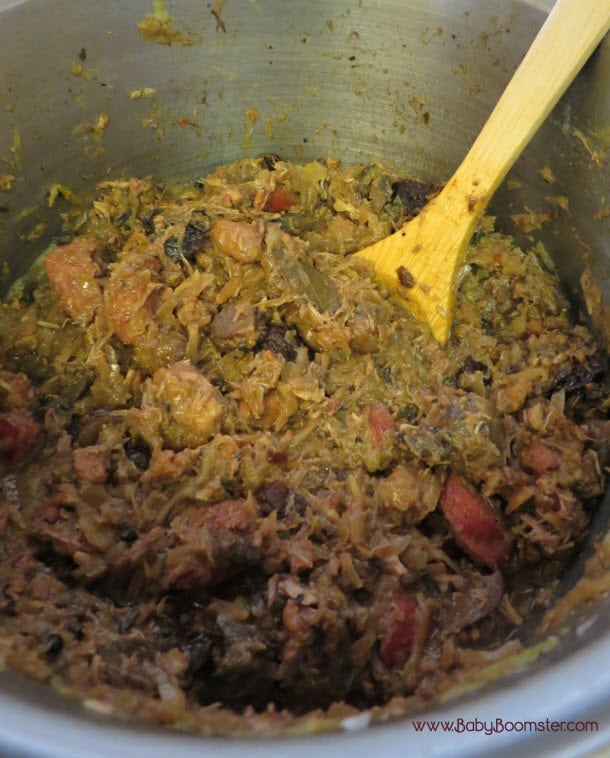
Polish Hunter’s Stew – Bigos
Ingredients
- 1 whole cabbage chopped
- 3 onions chopped
- 3-6 slices of marbled bacon
- About 2 lbs of fermented sauerkraut German is great
- 1 oz. Dried wild mushrooms
- 1 ½ lb mixed fresh mushrooms or brown crimini, porcini, morels, etc. If they are small leave whole or cut in half if larger
- ½ lb. pork shoulder cut into bite-sized pieces
- ½ lb. stew beef cubed
- 1-2 Fresh sausages Kielbasa, Andouille, or Bratwurst taken out its casing and crumbled
- ½ of a 2 foot smoked Kielbasa sausage
- Cold cut meat chopped optional
- 1 bottle of light or amber beer
- 1 cup of red wine
- 1 Tbsp. Peppercorns
- 1 Tbsp. Juniper berries
- 1 bay leaf
- 1 Tbsp. caraway seeds
- 2 natural beef bouillon cubes use cubes instead of liquid and opt for low or no salt
- 1 tsp allspice optional
- 20 pitted and halved prunes
- 8 oz. of dry red wine
- ½ baked bread rounds optional- baked – 1 per person
Instructions
- If you’re using dried mushrooms, pour hot water over them and let them soak for 20-40 minutes until they plump up. Set aside.
- With a mortar and pestle, gently grind the juniper berries and peppercorns so they are slightly cracked.
- In a large heavy pot, fry up about 3 slices of bacon for a few minutes
- Remove the bacon and slightly brown all your fresh meats in batches. Don’t cook them all the way through as the cooking process is long. Just brown them a bit on all sides and remove to set aside in a large bowl. You can chop up the bacon and set it aside with the meat.
- Add the chopped cabbage and onion to the pot and sauté until the cabbage is soft and the onions are translucent. Remove the cabbage and onions from the pot.
- Add 3 more strips of bacon to the heavy pot and fry for a couple minutes. Remove the bacon strips and leave the fat in the pot. Add the fresh and dried mushrooms and sauté them on high heat to sear and then a bit lower until they release their water. Cook until the water is somewhat reduced.
- Add back the browned meats, cabbage, and onions, spices, bouillon, smoked meats, and cold cuts. (If you are using them) Empty the bottle of beer into the mixture. Gently stir all the ingredients and simmer on the stove using very low heat for about 3 hours. You won’t have to add any water because the cabbage, beer, mushrooms, etc., will be enough., However, keep an eye on the pot to prevent any burning.
- Let the Bigos set until it’s cool and then refrigerate it overnight.
- The next day, take it out and let it simmer on very low heat for another 3 more hours.
- During the last 30 minutes of simmering add the prunes and glass of wine.
- Ultimately, you want the Bigos to have an amber appearance and not be soupy. It’s known as a dry stew.
- I made bowls out of small round bread loaves. I picked up ½ baked bread at Sprouts (they are available at other stores as well and used a sharp knife to cut a bowl into them. I filled the “bread bowls” up with Bigos and set them on individual plates. I used the remaining bread from cutting out the bowls to make croutons. (Day old, drizzled with olive oil, herbs, and baked for 15 minutes at 400 degrees)
Notes
Some people like to stick a ham hock in the middle of the Bigos mixture and let it cook until the meat starts to fall off. You would then fish out the ham hock and let it cool. Cut off the meat and add it to the pot and discard the bone and fat. Other meats you can use in Bigos are veal, venison, bison, poultry, and vegetables.
Before serving your Bigos remove the bay leaf and any bones in the meat if you cook with bone on.
You can also add a little tomato paste if desired.
As I mentioned, the longer your Bigos cooks, the better.
The National Dish of Poland
I used to have a Polish acting teacher who would spend days cooking a huge pot of Bigos for his birthday celebration. The longer it cooked on the stove, the better it tasted.
Bigos is a one-pot concoction of cabbage, sauerkraut, various types of meats, wild mushrooms, and sometimes prunes.
Traditionally, it’s made with alarming amounts of pork fat, lard, bacon, and other “porky” parts. Poles love their pork fat.
Bigos was served for breakfast, lunch, and dinner at some of the restaurants and hotels we stayed at during our trip. That made sense because the climate in Poland is frosty and a nice steaming plate of Bigos will quickly warm you up. Polish cuisine features many hearty soups, stews, meats, potatoes, dumplings, and cabbage all washed down with beer or shots of Polish vodka.
Even though I could have developed a more “health-conscious” Bigos recipe, possibly made with quinoa, tofu, kale, or goji berries, it just wouldn’t be the same as the real thing. Sometimes you have to “go with the flow” and savor foods that people all over the world have thrived on for centuries without immediately dropping dead. I mean, seriously. . . You know you want some. . . right?
It takes a little work but it’s so worth it
Try to use high-quality sauerkraut if you can. German sauerkraut, which has a creamy quality, is especially good.
You can also use a combination of wild dried mushrooms that have been re-plumped, fresh mushrooms, or a combination of both. The Polish people love to hunt for wild mushrooms in the forest and use them in their Bigos recipes. They’re wonderful, but any store-bought mushroom will do.
Because Bigos is a “Hunter’s Stew” you can use various combinations of meats, including game and smoked sausages. Bacon is an integral part of this rich and hearty dish.
I recommend not adding salt until after the Bigos is done and you do a taste test. Depending on what brand of sauerkraut you use, it will affect how much salt you need.
Serve it in a bread bowl
Enjoy your Bigos with Pierogi, which you can find frozen if you don’t make them yourself, and Polish beer.
Our trip to Poland
We were invited to Poland to attend a film festival that my partner was speaking at in Bydgoszcz. I was both excited and a little nervous. Some of the Polish people I’d met in years past were clearly anti-Semitic. They or their relatives suffered through a horrific war and Communist takeover so some bitterness is understandable.
Much to my delight and relief, I found the Polish people I met on our trip to be friendly, hospitable, and sympathetic to the plight and history of the Jews in Poland – as well as their many contributions to Polish art, culture, science, and business.
Photos from our time in Warsaw
Click on the images to view them full-sized.
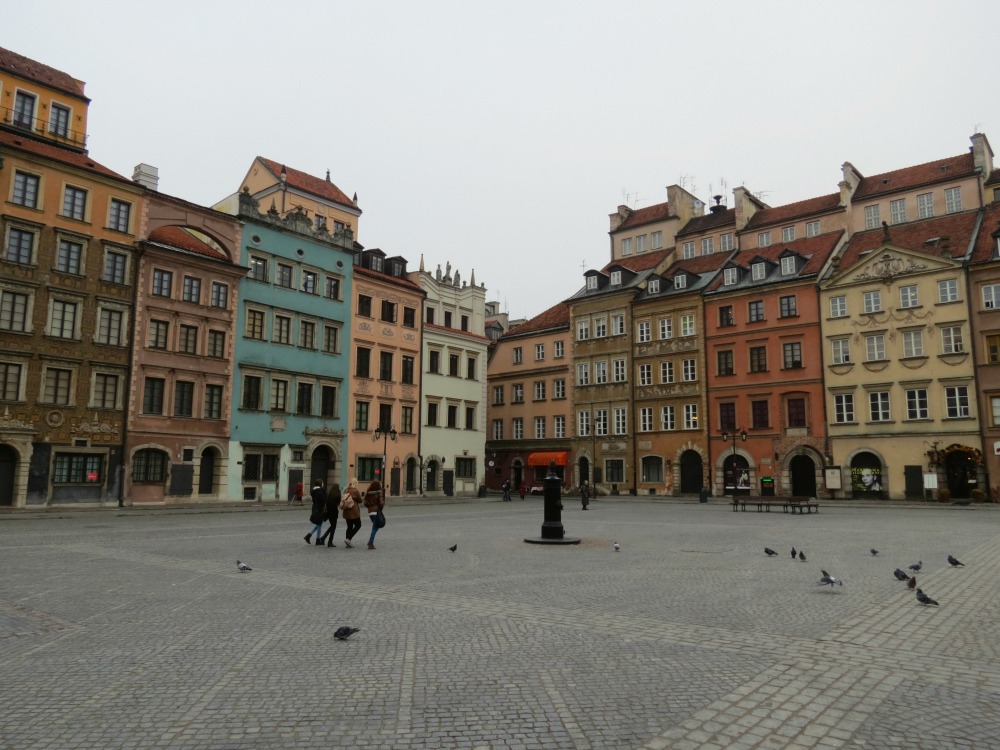



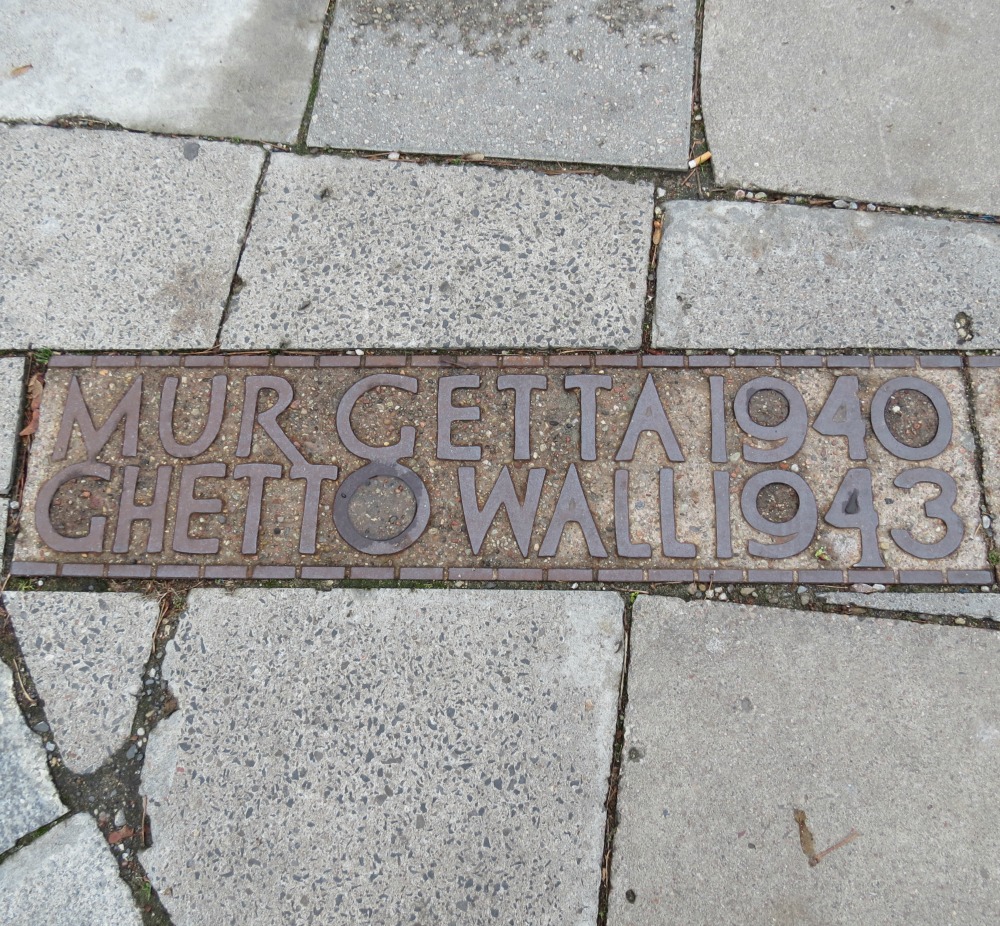
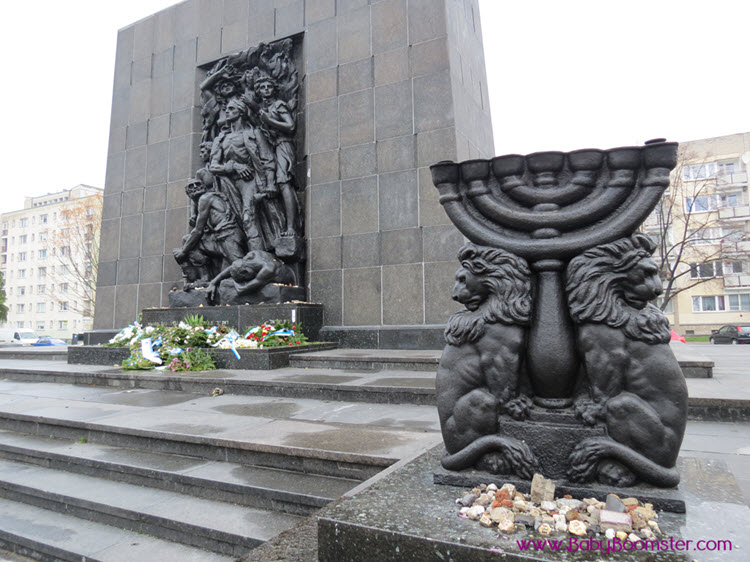

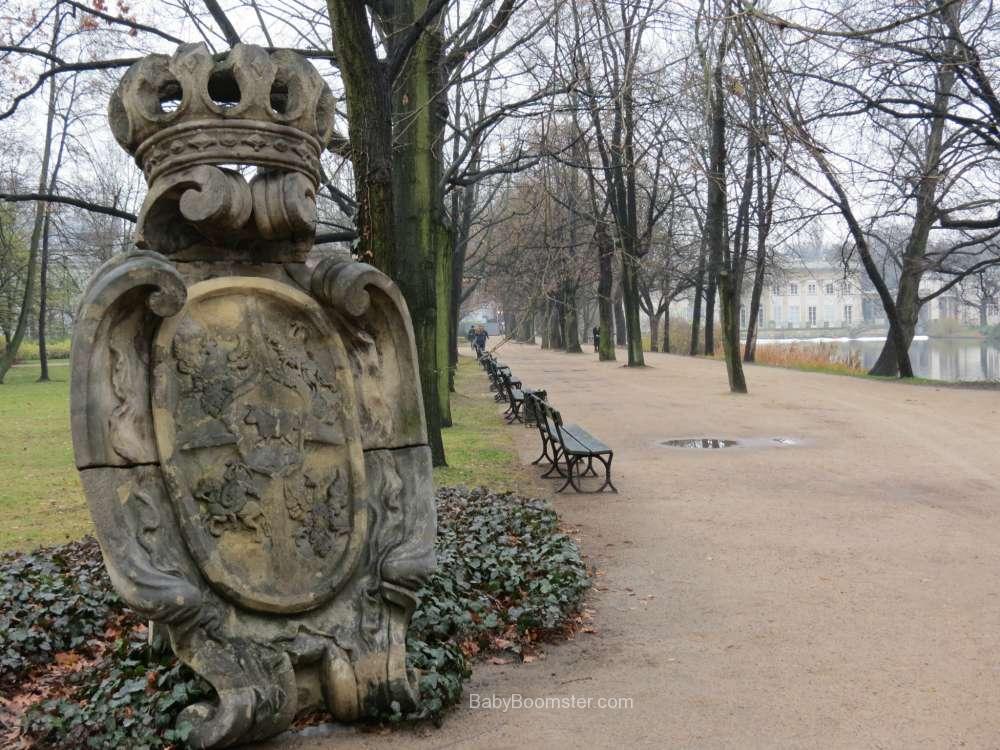

Find the best things to do in Warsaw, here.
Have you ever eaten Bigos? What is your favorite Polish dish? Please leave a comment below.




Sounds delicious Rebecca. Lots of good stuff. I’ll give it a shot for sure, but I’d like to make a lot, so might have to get both crocks running lol
I hope you like it Rob. It’s my favorite Polish dish. So yummy! Let me know how it turns out.
Thank you for all your pictures and the bigos recipe. My grandparents were born in Poland ,then moved to Pennsylvania and Connecticut. I visited krakow 3 years ago so your pictures were a wonderful connection.
I’m so glad it brought back memories Ann.. I loved visiting Krakow and would love to spend more time there.